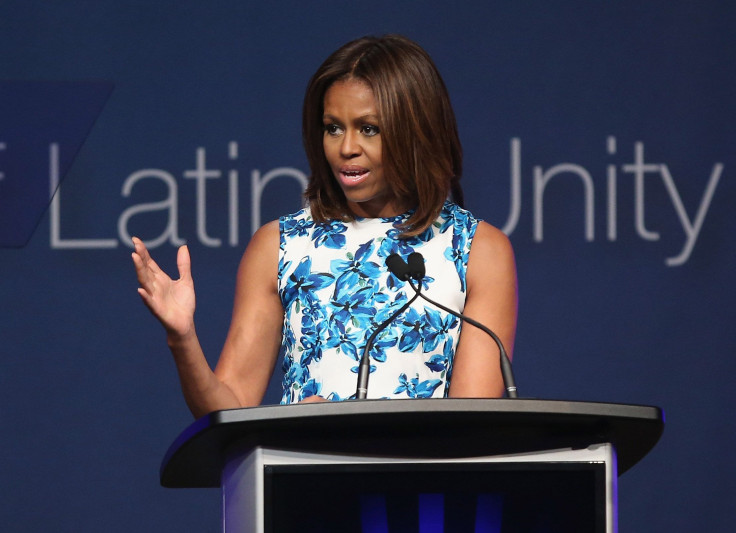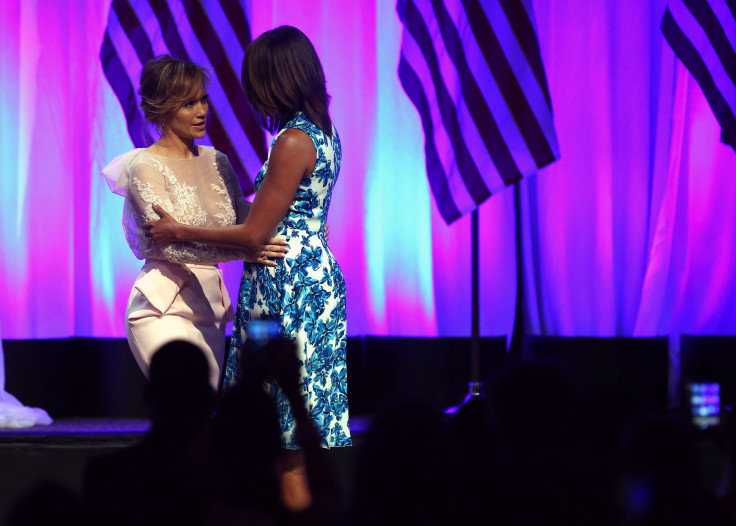
On Thursday, First Lady Michelle Obama at the annual convention of the League of United Latin American Citizens, or LULAC, in New York City discussing the how far Latinos have come in terms of education and how far they have yet to go. The First Lady pointed out that "when it comes to college, Latinos are far more likely to drop out" and discussed the untapped potential of the Latino community.
“In the face of so many challenges and obstacles, you’re still asking the hard questions,” she said, at the Hilton hotel in midtown Manhattan where she was introduced by actress and singer Jennifer Lopez. “How do we instill in them that hunger for education? There are still too many young people in this country who aren’t getting the education they need. Too many young people in the Latino community just aren’t fulfilling their potential.”
And right she is! The Pew Research Center has found in a recent survey the most pressing issue in the Hispanic community is education, followed by jobs and the economy and healthcare. When it comes to education, the FLOTUS knows a thing or two, as she launched an education initiative -- called Reach Higher -- to get low-income youth to aim for college and from her own personal experience going to an ivy league school despite growing up without privileges.
“We have to reignite that hunger for education,” the first lady said. “Parents have to be reading to their kids from an early age and make sure they go to school every day and do their homework every night. Our young people, you have to make education your number one priority. If you know someone who’s not planning to go on past high school, I want you to reach out to them.”

In the Latino community, there are several obstacles Hispanic students face. According to a report recently released by the Civil Rights Project at UCLA, African American students are seeing the most racial segregation now than they have in past decades. This pattern is also seen in the Hispanic/Latino community, where more than half of Hispanic/Latino students are attending schools that have a majority Hispanic/Latino student population. The report -- titled "Brown at 60" -- has found that Latinos are now significantly more segregated than blacks in suburban America; California is the state in which Latino students are most segregated; and Latino students tend to be in schools with a substantial majority of poor children.
"These are the schools that tend to have fewer resources, tend to have teachers with less experience, tend to have people who are teaching outside their area of specialty, and it also denies the opportunities, the contacts and the networking that occur when you're with people from different socio-economic backgrounds," said Dennis Parker, director of the American Civil Liberties Union Racial Justice Program, to the Associated Press.
Recently, a new study from the Center for American Progress has found that almost half the student population in the American public school system are nonwhite with 23 percent being Hispanic/Latino, 16 percent African-American, and 5 percent Asian. This value is a significant increase from previous years -- minorities made up 31 percent of public school students in 1993 and 41 percent in 2003 -- and the rates are expected to rise.
While the student population is seeing an increase in diversity, the same trend is not being observed amongst teachers as a "diversity gap" has been spotted. A study from the National Education Association (NEA) has found that of the 3.3 million public school teachers in America, 82 percent are white, 8 percent are Hispanic/Latino, 7 percent are African-American, and 2 percent are Asians.
That is not to say there is all bad news, as Hispanics have seen an increase in college enrollment in both two-year and four-year education institutions. In fact, from 1996 to 2012, college enrollment amongst Hispanics is said to have tripled and in 2012, Hispanics’ college enrollment rate between 18- to 24 year-old high school graduates surpassed that of non-Hispanic whites according Pew Research. It should be noted that while Latinos have seen an increase in enrollment, a mere 9 percent of Hispanics accounted for young adults with bachelor's degrees in 2012.
“The work of pursing your dreams is never finished,” said Obama. “There will always be doubters and cynics who will tell you to set your standards lower. When you start to doubt yourself, just buckle down.”
© 2025 Latin Times. All rights reserved. Do not reproduce without permission.




